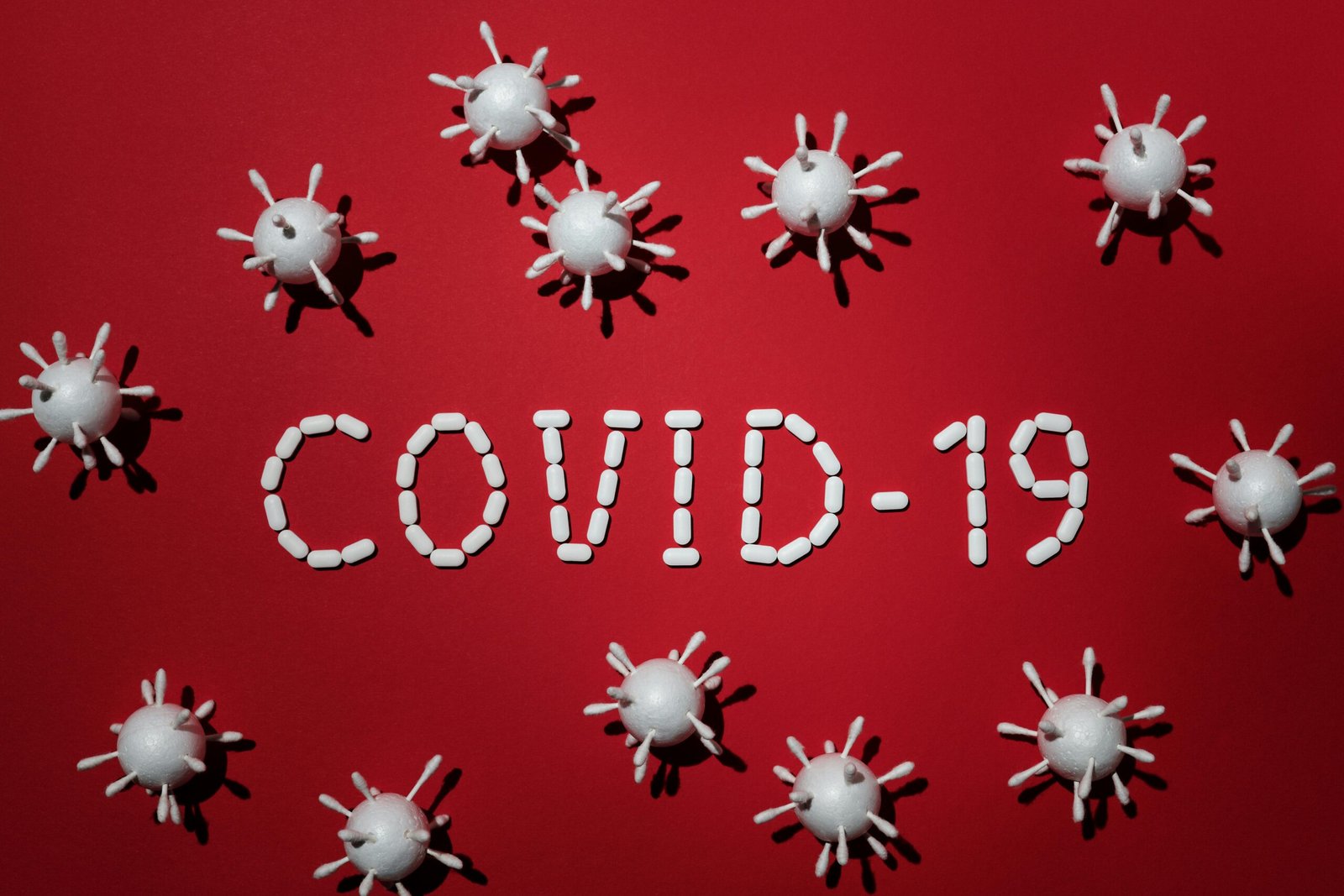A Handbook of Counseling and Psychotherapy
Psychotherapy and Counseling
A psychological specialty known as counseling psychology first concentrated on career counseling, then shifted its attention to adjustment counseling before broadening to include all forms of regular psychology psychotherapy. Counseling psychology has numerous subcategories, including clinical mental health counseling, educational counseling, rehabilitative counseling, and marital and family counseling. They must all adhere to the same rules in every location.
The American Society for Counseling Psychology states:
A wide range of culturally aware and sensitive techniques are used by counselors, a generalist health service (HSP) specialty in professional psychology, to assist clients in enhancing their well-being, preventing and reducing distress and maladjustment, resolving crises, and improving their capacity to function more effectively in daily life.

Photo by Polina Zimmerman
Psychology of counseling
It addresses people as well as the systems or situations in which they function, with a specific but not exclusive focus on normative life-span development. Prevention, education, and amelioration are given special attention. It specializes in matters related to work and careers.
How did counseling psychology come to be?
Prior to World War II’s conclusion
Before World War II, licensed psychologists tended to focus on science rather than patient care. Psychiatrists with training in both psychology and medicine were qualified to perform this task.
Lightner Witmer, a psychologist, established the first psychological patient clinic at the University of Pennsylvania in 1896. To characterize his work, he invented the phrase “clinical psychology.” During the initial part of the 20th century, adults and therapy received less attention in clinical psychology, which was primarily concerned with the psychological evaluation of children.
Frank Parsons founded the Vocation Bureau in Boston in 1908. That year, Parsons developed the term “vocational guidance,” and the Bureau quickly emerged as the leading authority on the idea nationwide. The Bureau successfully argued for the appointment of several vocational counselors by Boston schools and supported their work. In 1909, Parson released his seminal work, Choosing a Vocation. The first vocational guidance program was provided by the Boston YMCA.
In 1913, the National Vocational Guidance Association (NVGA) was established, building on the work of the Bureau.
Founded in 1917 as the National Social Workers’ Exchange, it grew to become the American Association of Social Workers in 1921.
In 1929, Abraham and Hannah Stone founded a marriage counseling center in New York. Paul Popenoe founded the American Institute for Family Relations (AIFR) in Los Angeles in 1930. The Marriage Council of Philadelphia was established in 1932 by Emily Mudd. Originally founded in Germany, this type of organization has spread over portions of Europe.
American psychologist Carl Rogers coined the term “counseling” to refer to psychological therapy during World War II. Rogers released Counseling and Psychotherapy in 1942. He stated in the preface to that book that “psychotherapy” and “counselling” were interchangeable, with the primary distinction being the way various professions tended to utilize them. He pointed out that individuals engaged in this type of employment can identify themselves as “industrial personnel workers, psychologists, college counselors, marriage counselors, psychiatrists, social workers, high school guidance counselors, or by some other name.”
The American Association of Marriage Counselors (AAMC) was also founded in 1942. Mudd and the Stones were involved in this.
A wonderful modification
Numerous soldiers returned home as World War II came to a close in 1945. The US Veterans Administration (VA) has a great need for vocational and personal adjustment counseling because over 3.2 million American veterans applied for training under the GI Bill. Rogers received an invitation to open a counseling center at the University of Chicago in that same year.
Around this same period, a significant number of clinical psychologists who worked for the VA started treating adults in therapy.
The American Psychological Association similarly created Divisions at the end of the war, allowing its members to join interest groups. In 1945, Divisions 11 and 12 were established. The two eventually combined to form the “Division of Clinical and Abnormal Psychology” (now Division 12).
In 1946, the American Psychological Association established Division 17, which was originally named the “Division of Personnel and Guidance Psychologists”.
Connecticut became the first state in the US to mandate licenses for psychologists in 1946. Missouri was the last to do so in 1977.
Rogers was chosen to serve as the APA’s president in 1947.
Navy chaplains were trained by the Marriage Council of Philadelphia, which launched the nation’s first marriage counseling program in 1948.
Psychology of therapy as well as other forms of counseling
The APA renamed Division 17 as the “Division for Counseling Psychology” in 1951. In order to advance counseling psychology as a field of study, practice, diversity, scientific inquiry, and public interest, this organization brought together psychologists, students, and professionals. The “Society for Counseling Psychology” is what it would eventually be called.
The NVGA, the American College Personnel Association (ACPA), the Student Personnel Association for Teacher Education (SPATE), and the National Association of Guidance and Counselor Trainers (NAGCT) were combined to become the American Personnel and Guidance Association (APGA) in 1952.
First PhD programs in counseling psychology were offered by the University of Minnesota, Ohio State University, University of Maryland, College Park, University of Missouri, Teachers College, Columbia University, and University of Texas beginning in the early 1950s.
The International Handbook of Cross-Cultural Counseling, Counseling Around the World: An International Handbook, and Handbook of Counseling and Psychotherapy in an International Context are among the books that outline the current status of the field internationally. When combined, these books cover the counseling profession’s worldwide history, examine contrasting philosophical stances, counseling theories, practices, and patterns across national boundaries, and evaluate numerous international counseling education initiatives.
Furthermore, ancient and indigenous healing and therapeutic modalities that may have existed for hundreds of years before contemporary counseling techniques still hold importance in many non-Western and Western nations.
Qualifications for Education
In order to work as a counseling psychologist in the United States, one must first graduate from a four-year university with a bachelor’s degree in psychology, sociology, anthropology, or a related field. The next prerequisite is to earn a Master’s degree after earning a Bachelor’s. Even though Master’s degrees have different requirements depending on the program, one can become a counselor after earning one. Still, if the program you’re in offers it, you could be able to finish your Master’s and PhD at the same time. A PhD is sometimes known as a doctorate degree. But there is also a PsyD in the counseling and psychological fields. A PsyD is a Doctor of Psychology degree with a focus on clinical and daily work.

Photo by Anastasiya Gepp
Graduates are also equipped to provide direct patient care. A PhD is a research-based, statistics-focused Philosophy of Doctorate degree. To obtain a doctorate, one must enroll in an approved program. An accredited program has received APA approval. In order for a psychology program to be successful, ethical, and skillful, it must adhere to professional and scientific norms, which are ensured by the American Psychological Association (APA).
Salary
Counseling psychologists’ median pay in the US ranged from $86,938 to $90,130 in 2022. O*NET estimates that the hourly wage is $43.33. Between 2021 and 2031, the anticipated growth rate is predicted to exceed the average. Over 5,000 job opportunities are anticipated throughout that time.
Instruction and oversight
Process of professional training :
Graduate programs are the training ground for counseling psychologists. While some programs provide a Psy.D. or an Ed.D., almost all programs award a PhD. The majority of PhD programs require 5-7 years to finish. Coursework in general psychology and statistics, counseling practice, and research are all part of the graduate program in counseling psychology. At the conclusion of their graduate studies, students are required to finish a unique dissertation. Obtaining a PhD requires students to finish a one-year full-time internship in an approved location. Counseling psychologists need to complete a standardized exam and obtain clinical experience under supervision in order to be licensed to practice.
Research and training models :
Counselor supervision and training are studied and practiced in counseling psychology. Counseling psychologists might look into what makes supervision and training successful in their capacity as researchers. Counseling psychologists can supervise and train a range of clinicians in their capacity as practitioners. Formal classes and training programs are typically used for counselor training. Counseling clients under the supervision of a professional clinician may constitute a component of counselor education. Licensed clinicians can also supervise one another in order to enhance the caliber of their work and their proficiency with a range of counseling clients.
Early training models for the field of counseling psychology included Allen Ivey’s microcounseling techniques, Norman Kagan’s Interpersonal Process Recall, and Robert Carkuff’s human relations training model. These models emerged in the middle of the 20th century. Clara E. Hill’s three-stage approach (exploration, insight, and action) and Gerard Egan’s competent helper model are examples of contemporary training models. Modeling, instruction, and feedback are common to most training models and appear to have medium to substantial effects on trainees, according to a recent study of studies on counselor training.
Research and paradigms for supervision:
There are models of interactions between therapists and their supervisors as well as models of interactions between therapists and clients. Comparable to his idea of therapeutic working alliance, Edward S. Bordin offered a model of supervision working alliance. The degree of a client’s motivation/anxiety, autonomy, and self and other awareness are all taken into account by the Integrated Development Model. The relationship between the supervisor and the supervised, as well as the supervisor’s personal traits, counseling clients, training environment, and the responsibilities and functions of supervision, are all deemed significant by the Systems Approach to Supervision. The key moments that take place between the supervisor and the supervised are the subject of the Critical Events in Supervision model.
Issues with training and supervision may occur. Concerns have been raised regarding the necessity of formal training for supervisors in order to be competent in their role. According to recent study, clients and supervisors may have contradictory, multiple relationships, such as the client, teacher, and clinical supervisor interactions. Racial microaggressions against Black customers are common, which raises the possibility of racial bias in monitoring. Generally speaking, when supervisors act disrespectfully, offer little assistance, or place the blame, tensions between counselors and their own supervisors may develop.
Which categories does counseling fall under?
Career guidance:
Helping people with guidance at every stage of their career path is the aim of career counseling. In order to assist people make wise decisions about their lives and careers, career counseling aims to better understand each client and the society they live in. Among the many services offered by career counselors is trying to assist people in finding who they are. Counselors also make an effort to assist clients in identifying their true objectives and desired outcomes in terms of their schooling, careers, or overall well-being.professional counselors assist people in identifying potential professional paths as well as in finding materials and other information that could help them reach their long-term objectives.
A kind of roadmap is made by career counselors to assist people in seeing where they are in the process of realizing their goals. Counselors must assure clients that unemployment is just transitory and that their status will soon change because one of the issues they deal with is people’s tendency to believe that unemployed might last a lifetime. Counselors must therefore make every effort to provide encouragement so that clients will concentrate more on determining their life’s purpose.In addition to textual tasks, career planning exploration, modeling techniques, and occupational knowledge can all be included in career counseling.

Photo by Tirachard Kumtanom
A personality or career interest assessment, such as the Myers-Briggs Type Indicator, which is based on Carl Jung’s theory of psychological type, or the Strong Interest Inventory, which utilizes Holland’s theory, can also be used in career counseling. In career counseling, assessments of values, skills, and abilities are also frequently conducted. Career counselors are free to choose whether to hold individual or group sessions in-person, virtually, or through a combination of these formats. There isn’t currently a universally recognized criteria for becoming a certified career counselor; instead, certification requirements and credentials are contingent upon local, state, and corporate laws.
Counseling for marriage and families:
In order to bring about good changes within the family, marriage and family counseling aim to examine the connections and interactions within the unit, talk about the activities that have already been taken positively, and discuss how to modify the negative behaviors. Through marriage and family counseling, the family can learn how to cooperate to run the home and, when needed, find solutions.
counseling for rehabilitation:
Rehabilitation counseling’s objective is to assist individuals with impairments in reaching their personal, professional, and academic objectives. A counselor who specializes in rehabilitation counseling works closely with a client to address their goals and develop a strategy to reach them.
professional counseling for mental health:
Article focus: Clinical therapy for mental health
Clinical mental health counseling deals with a wide range of problems, including stress, abuse, addiction, and problems in families and relationships. Clinical mental health counseling offers direction on how to manage and get through these challenges in life. They support any changes made to enhance each client’s quality of life.
counseling for education:
Working with elementary, junior high, and high school students to discuss future educational goals is the aim of educational counseling. Educational counselors serve elementary and junior high school students by offering assistance and collaborating with educators and parents to prevent bad behaviors and substitute them with positive ones. An educational counselor’s primary role in a high school is to assist pupils in planning for success beyond graduation.
What effects does COVID have on counseling?
Career counselors have had to modify numerous existing plans with their clients due to the ongoing pandemic. while also assisting in their improvement through exposure to novel and varied circumstances. The epidemic first resulted in a large-scale employment loss, disrupting many people’s aspirations for their careers. Employment fell by about 22.4 million people at the start of 2020, a decrease of almost 15%. The fact that many schools temporarily closed due to the epidemic, which had a detrimental effect on pupils, is another important aspect. One such instance involves students who were hoping to begin their master’s degree but were unable to do so due to the school closure. This could have had a detrimental effect on their future professional trajectory.
Counselors immediately faced a problem once schooling began to re-occur online. Since the switch to an online platform, they have had to become more tech-savvy and learn how to work digitally much faster in order to assist clients. Although shifting to a larger online counseling presence can be challenging, there will be more benefits in the long run. One important benefit is that getting counseling now has much more flexibility. While some instances are better suited for in-person care, such as addictions, some cases are still better suited for online telehealth.Around 2020, the percentage of referrals for seeing a psychologist nearly doubled to 62%. Regarding psychologists, 7 out of 10 reported that their waiting had gotten longer, or almost 68%.

Photo by Edward Jenner
The impact that Covid has had on the counselor’s health is another thing to take into account. Given how the pandemic has impacted their patients, it stands to reason that counselors, who are spending more time serving others over themselves, would also be severely impacted. It has been seen that counselors may be experiencing overwhelm, which can have a number of detrimental effects. Hopefully, they will be able to stay aware to better care for themselves while assisting others, thanks to study and information based on previous disasters.
Conclusion | Counseling and Psychotherapy
For those who are looking for assistance and direction in overcoming obstacles in life, it is imperative to acknowledge the role that psychotherapy and counseling play in fostering mental health and wellbeing.
Numerous therapeutic methods, such as humanistic approaches, psychodynamic therapy, and cognitive-behavioral therapy, provide useful tools for addressing a range of psychological difficulties and promoting personal development.
It’s important to recognize that although self-help materials and internet forums can offer insightful information and helpful coping mechanisms, they cannot replace professional help.
Consulting with licensed psychotherapists and counselors guarantees customized interventions and individualized support that cater to the particular requirements and situations of every client.
Consider looking at cutting-edge platforms like Case Book Management Hub, which are intended to improve client care and expedite practice management, if you’re a mental health professional looking for efficient client management solutions.
We hope that this summary has provided insightful information on how counseling and psychotherapy can support resilience and mental health. We encourage you to get in touch with us if you have any further questions or need more information; we would be happy to help.

[…] See Also: The Complete Guide to Psychotherapy and Counseling […]